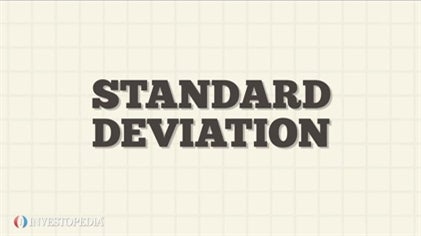A swap, in financing, is an agreement in between two counterparties to exchange monetary instruments or cashflows or payments for a certain time. The instruments can be nearly anything but the majority of swaps include cash based upon a notional principal amount. The basic swap can also be seen as a series of forward contracts through which 2 celebrations exchange monetary instruments, leading to a common series of exchange dates and two streams of instruments, the legs of the swap. The legs can be almost anything however generally one leg involves capital based upon a notional principal quantity that both parties accept.
In practice one leg is generally fixed while the other is variable, that is identified by an unpredictable variable such as a benchmark interest rate, a foreign exchange rate, an index cost, or a product cost. Swaps are primarily non-prescription contracts in between business or financial organizations (How to find the finance charge). Retail financiers do not typically participate in swaps. A mortgage holder is paying a drifting rate of interest on their home mortgage but anticipates this rate to increase in the future. Another mortgage holder is paying a fixed rate however expects rates to fall in the future. They get in a fixed-for-floating swap contract. Both home mortgage holders settle on a notional principal amount and maturity date and consent to take on each other's payment responsibilities.
By utilizing a swap, both celebrations efficiently changed their mortgage terms to their favored interest mode while neither celebration had to renegotiate terms with their mortgage lending institutions. Thinking about the next payment only, both parties may too have actually entered a fixed-for-floating forward agreement. For the payment after that another forward agreement whose terms are the exact same, i. e. very same notional quantity and fixed-for-floating, and so on. The swap agreement therefore, can be viewed as a series of forward agreements. In the end there are 2 streams of cash streams, one from the party who is always paying a fixed interest on the notional amount, the set leg of the swap, the other from the celebration who agreed to pay the drifting rate, the floating leg.
Swaps were first presented to the public in 1981 when IBM and the World Bank participated in a swap agreement. Today, swaps are amongst the most greatly traded financial contracts in the world: the total quantity of rates of interest and currency swaps outstanding was more than $348 trillion in 2010, according to Bank for International Settlements (BIS). The majority of swaps are traded non-prescription( OTC), "custom-made" for the counterparties. The Dodd-Frank Act in 2010, nevertheless, visualizes a multilateral platform for swap pricing estimate, the swaps execution facility (SEF), and mandates that swaps be reported to and cleared through exchanges or clearing houses which consequently caused the formation of swap information repositories (SDRs), a main center for swap data reporting and recordkeeping.
futures market, and the Chicago Board Options Exchange, registered to end up being SDRs. They began to note some kinds of swaps, swaptions and swap futures on their platforms. Other exchanges followed, such as the Intercontinental, Exchange and Frankfurt-based Eurex AG. According to the 2018 SEF Market Share Stats Bloomberg controls the credit rate market with 80% share, TP controls the FX dealer to dealer market (46% share), Reuters dominates the FX dealership to customer market (50% share), Tradeweb is greatest in the vanilla rates of https://www.elmens.com/business/5-benefits-of-investing-in-real-estate/ interest market (38% share), TP the most significant platform in the basis swap market (53% share), BGC dominates both the swaption and XCS markets, Tradition is the biggest platform for Caps and Floors (55% share).
At the end of 2006, this was USD 415. 2 trillion, more than 8. 5 times the 2006 gross world item. Nevertheless, since the cash circulation generated by a swap is equivalent to a rates of interest times that notional quantity, the money circulation generated from swaps is a considerable portion of but much less than the gross world productwhich is likewise a cash-flow step. The majority of this (USD 292. 0 trillion) was due to interest rate swaps. These divided by currency as: Source: BIS Semiannual OTC derivatives stats at end-December 2019 Currency Notional impressive (in USD trillion) End 2000 End 2001 End 2002 End 2003 End 2004 End 2005 End 2006 16.
9 31. 5 44. 7 59. 3 81. 4 112. 1 13. 0 18. 9 23. 7 33. 4 44. 8 74. 4 97. 6 11. 1 10. 1 12. 8 17. 4 21. 5 25. 6 38. 0 4. 0 5. 0 6. 2 7. 9 11. 6 15. 1 22. 3 1. 1 1. 2 1. 5 2. 0 2. 7 3. 3 3. 5 Source: "The Worldwide OTC Derivatives Market at end-December 2004", BIS, , "OTC Derivatives Market Activity in the Second Half of 2006", BIS, A Major Swap Individual (MSP, or in some cases Swap Bank) is a generic term to explain a monetary organization that facilitates swaps in between counterparties.
Rumored Buzz on What Does Finance Mean When Buying A Car
A swap bank can be a worldwide business bank, a financial investment bank, a merchant bank, or an independent operator. A swap bank serves as either a swap broker or swap dealership. As a broker, the swap bank matches counterparties but does not https://criticsrant.com/digital-solutions-for-sourcing-the-best-real-estate-agents/ assume any danger of the swap. The swap broker receives a commission for this service. Today, a lot of swap banks work as dealerships or market makers. As a market maker, a swap bank is willing to accept either side of a currency swap, and then later on-sell it, or match it with a counterparty. In this capability, the swap bank assumes a position in the swap and therefore assumes some dangers.

The 2 main factors for a counterparty to use a currency swap are to obtain debt financing in the swapped currency at an interest cost reduction brought about through relative benefits each counterparty has in its national capital market, and/or the benefit of hedging long-run currency exchange rate exposure. These factors seem simple and difficult to argue with, especially to the extent that name acknowledgment is really important in raising funds in the global bond market. Companies using currency swaps have statistically higher levels of long-term foreign-denominated financial obligation than firms that utilize no currency derivatives. Alternatively, the primary users of currency swaps are non-financial, global companies with long-lasting foreign-currency funding needs.
Financing foreign-currency financial obligation using domestic currency and a currency swap is therefore superior to financing directly with foreign-currency financial obligation. The two main factors for swapping rates of interest are to better match maturities of properties and liabilities and/or to acquire an expense savings by means of the quality spread differential (QSD). Empirical proof recommends that the spread between AAA-rated business paper (floating) and A-rated commercial is slightly less than the spread in between AAA-rated five-year responsibility (fixed) and an A-rated responsibility of the same tenor. These findings recommend that companies with lower (higher) credit scores are more likely to pay fixed (drifting) in swaps, and fixed-rate payers would use more short-term debt and have much shorter financial obligation maturity than floating-rate payers.
